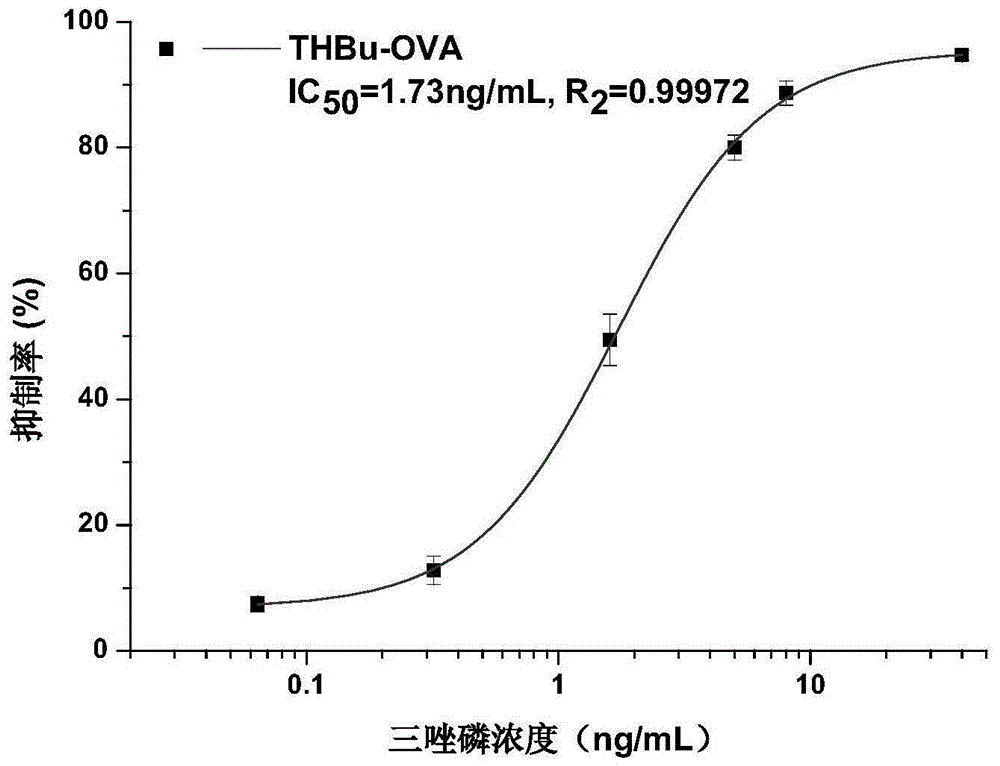Triazophos-resistant single-chain antibody and application thereof
A single-chain antibody and anti-triazophos technology, which is applied in the fields of genetic engineering, immunological detection, and antibody engineering, can solve unreasonable problems, achieve huge application potential, high sensitivity, and reduce interference
- Summary
- Abstract
- Description
- Claims
- Application Information
AI Technical Summary
Problems solved by technology
Method used
Image
Examples
Embodiment 1
[0027] Example 1: Amplification of single-chain antibodies
[0028] 1. Antibody heavy chain, light chain variable region gene amplification
[0029] The fresh monoclonal cell line 8C10 (secreting anti-triazophos-specific monoclonal antibody) was screened in this experiment, subtype IgG1 / lambda. Take 5×10 with good uniformity and purity 6 From hybridoma cells, total RNA was extracted and purified to obtain mRNA, which was then reverse-transcribed to synthesize the first strand of cDNA. Using subtype-specific degenerate primer pairs, cDNA was used as a template for PCR amplification to obtain heavy chain variable region genes (VH) and light chain variable region genes (VL), respectively, cloned into Bluntzero vectors and transformed into large intestine The Bacillus Trans1-T1 competent cells were sequenced, and the sequences were compared with the database Blast, and the VH and VL genes with complete functional domains, consistent subtypes, and correct expression frames were i...
Embodiment 2
[0044] Example 2: Preparation of single-chain antibody
[0045] 1. Construction of expression vector and preparation of genetically engineered bacteria
[0046] The cloning vector containing the single-chain antibody gene shown in SEQ ID No: 2 (obtained in Example 1) was subjected to a double digestion reaction with restriction endonucleases NcoI and NotI, and the digested single-chain antibody fragments were recovered. The PIT2 vector plasmid was double-digested with restriction endonucleases NcoI and NotI, and the digested vector backbone was recovered. The double-enzyme-digested single-chain antibody fragment was connected to the vector backbone to generate a recombinant plasmid for sequencing. After sequencing results analysis, the structure of the recombinant vector is described as follows: insert the single-chain antibody gene fragment shown in SEQIDNo: 2 between the NcoI and NotI restriction sites of the PIT2 vector, and the signal peptide on the 5' end of the fragment...
Embodiment 3
[0050] Embodiment 3: the application of single-chain antibody
[0051] 1. Reaction sensitivity of single chain antibody
[0052] Artificial antigen THBu-OVA was prepared by mixed anhydride method. Dilute the antigen with CBS to a coating concentration of 10 μg / mL, add 100 μL / well to 96 wells, incubate at 37°C for 2 hours, wash the plate, block with 2% skimmed milk powder-PBS for 1 hour and wash the plate three times. Add 50 μL of triazophos standard sample (PBS is the blank solvent control) with different concentrations (that is, the final concentrations are 0.064, 0.32, 1.6, 5, 8, 40 ng / mL) to each well, set up three replicate wells, and add 50 μL of the single-chain antibody solution prepared in Example 2, so that the absorbance of the control well is around 1. After incubation at 37°C for 1 h, the plate was washed three times. Add 100 μL anti-myc-tag mouse monoclonal antibody (Beijing Kangwei Biotechnology Co., Ltd.) to each well, react at 37°C for 1 hour, and wash the p...
PUM
 Login to View More
Login to View More Abstract
Description
Claims
Application Information
 Login to View More
Login to View More - R&D Engineer
- R&D Manager
- IP Professional
- Industry Leading Data Capabilities
- Powerful AI technology
- Patent DNA Extraction
Browse by: Latest US Patents, China's latest patents, Technical Efficacy Thesaurus, Application Domain, Technology Topic, Popular Technical Reports.
© 2024 PatSnap. All rights reserved.Legal|Privacy policy|Modern Slavery Act Transparency Statement|Sitemap|About US| Contact US: help@patsnap.com










